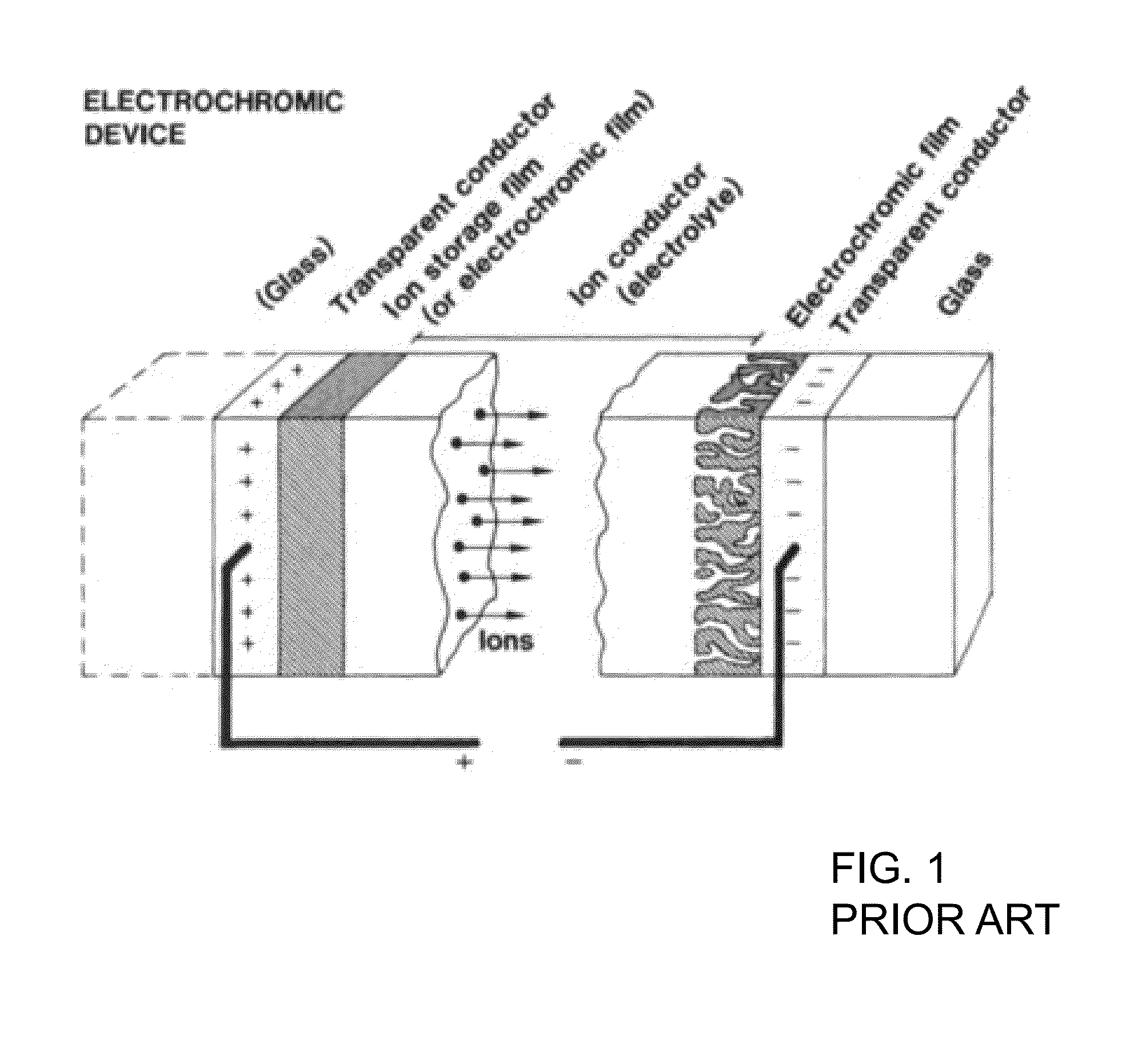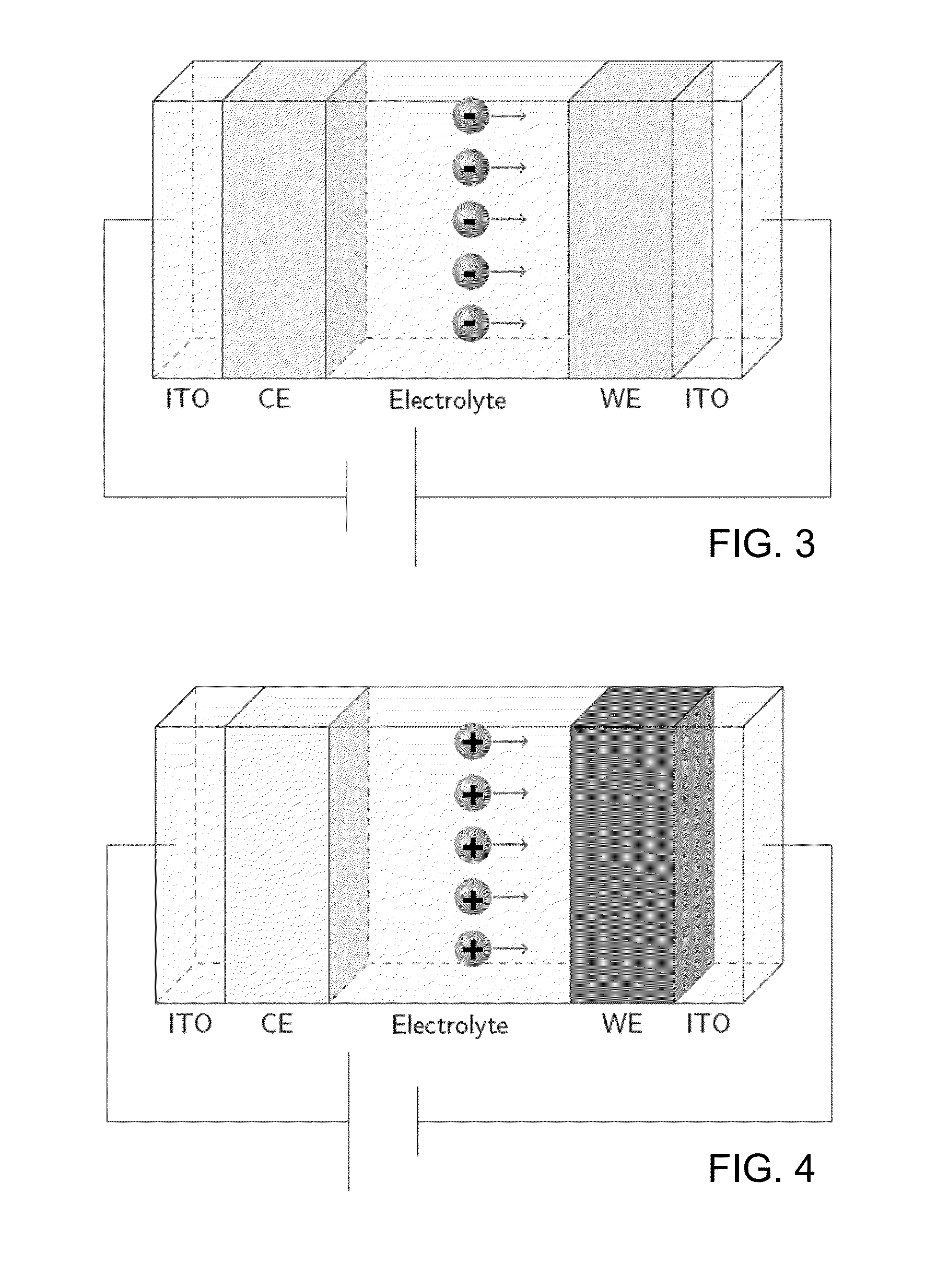Heat-resistant electrolyte materials and electrochromic devices including them
- Summary
- Abstract
- Description
- Claims
- Application Information
AI Technical Summary
Benefits of technology
Problems solved by technology
Method used
Image
Examples
experimental study
[0080]The aim of the study was to develop ECWs that can be used as sunroofs in automobiles. Automobile sunroofs can experience high temperatures throughout the day. Therefore, it is important to design an ECW that can function efficiently at a wide range of temperatures. In this study, an ECW is developed to operate with good optical contrast and switching speed in the temperature range of 20° C. to 120° C. The individual components of ECW are tested for heat resistance. The gel electrolyte was found to be the most vulnerable component of the ECW, and a new gel electrolyte with higher heat resistance has been developed.
Components of ECW
[0081]The ECW includes three main components:[0082]1. An electrochromic material (e.g., fashioned as a “working electrode (WE)”),[0083]2. A counterelectrode (CE) that acts as ion storage material, which stores lithium and releases lithium cations into the electrolyte (depending on whether the electrochromic material is being oxidized or reduced. This ...
PUM
 Login to View More
Login to View More Abstract
Description
Claims
Application Information
 Login to View More
Login to View More - R&D
- Intellectual Property
- Life Sciences
- Materials
- Tech Scout
- Unparalleled Data Quality
- Higher Quality Content
- 60% Fewer Hallucinations
Browse by: Latest US Patents, China's latest patents, Technical Efficacy Thesaurus, Application Domain, Technology Topic, Popular Technical Reports.
© 2025 PatSnap. All rights reserved.Legal|Privacy policy|Modern Slavery Act Transparency Statement|Sitemap|About US| Contact US: help@patsnap.com



